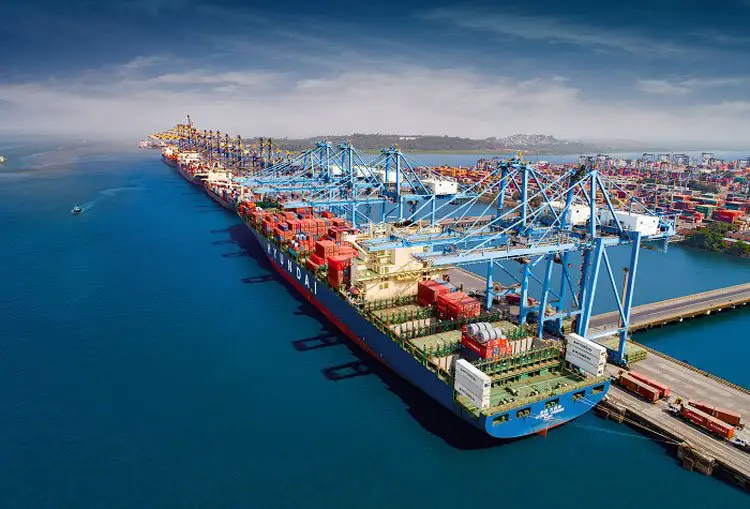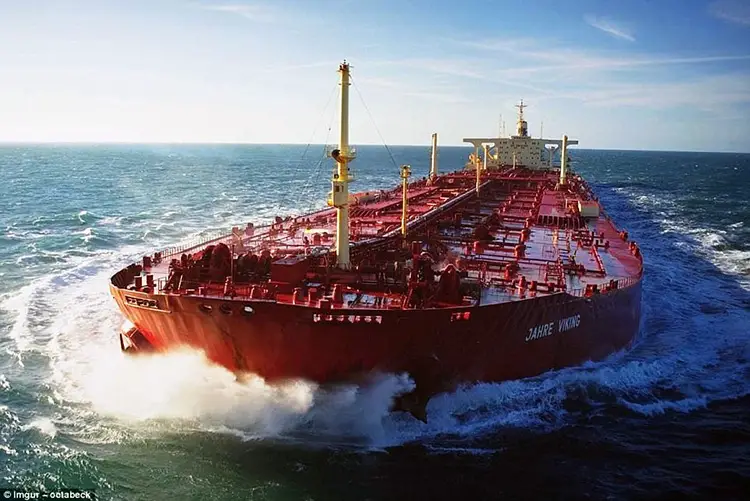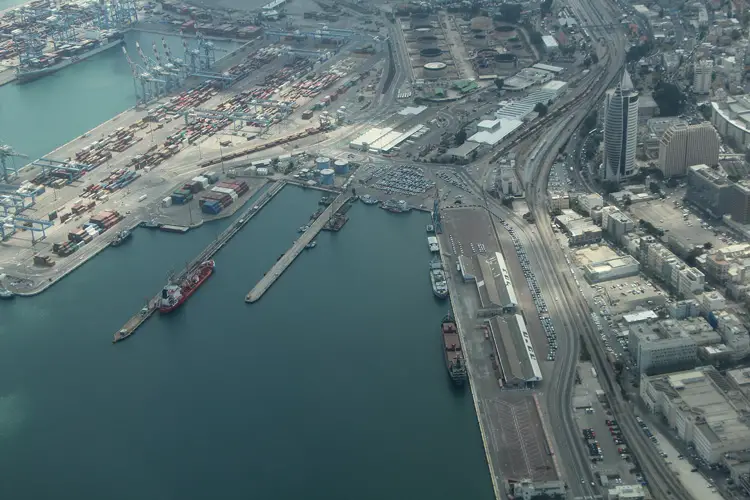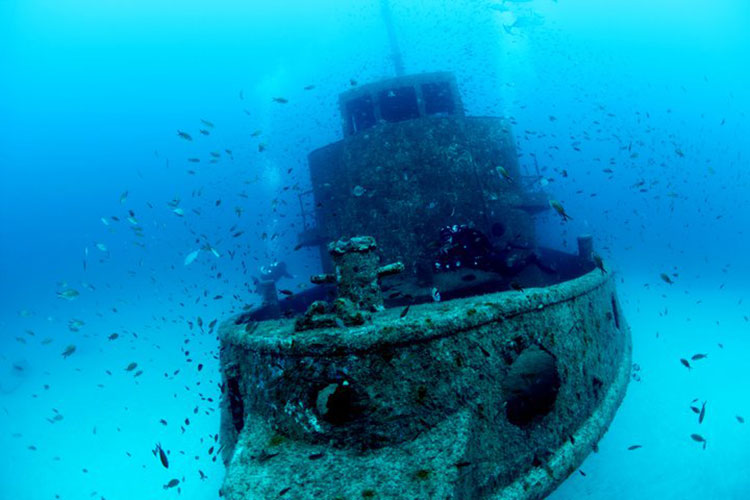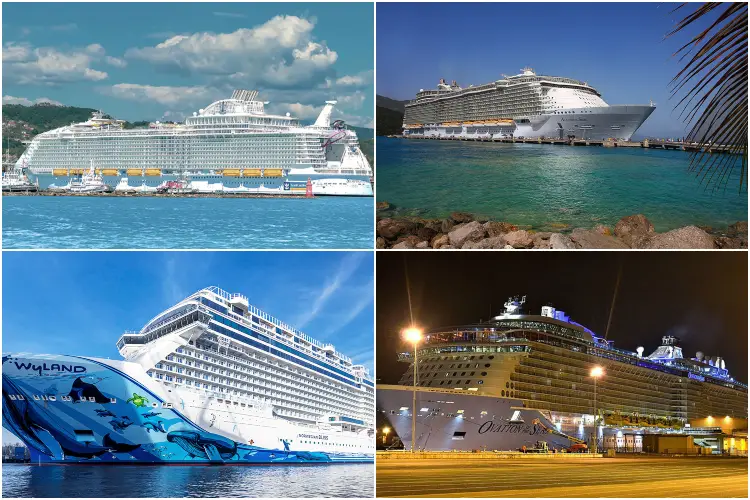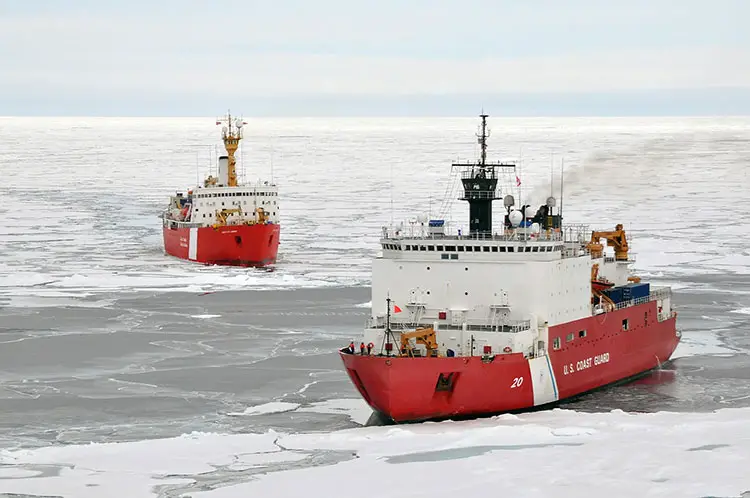Major Container Ports in the World
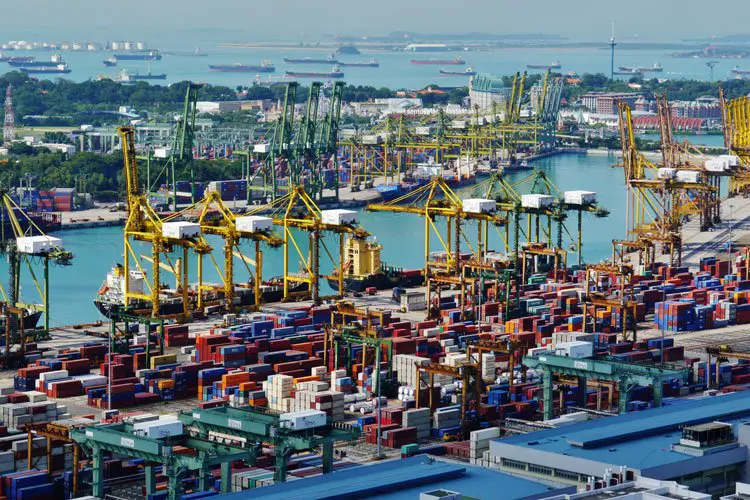
Container ports (also known as container terminals) are specialized marine port facilities that focus on container shipping and transshipment.
Terminals are crucial in the global logistics and supply chain business because they determine the speed at which commerce and trade may occur. Terminals that are efficient and streamlined run smoothly, minimizing ship wait times and improving cargo output.
To accommodate arriving containers, most shipping ports now have dedicated container terminals. They are located within the port’s grounds but are not near the passenger or cruise terminals.
Container terminals are so significant that the volume and quantity of containers passing through them are used as international criteria for determining a port’s efficiency and ranking.
With ocean freight accounting for 90% of worldwide trade, the maritime shipping industry is undeniably important to the global economy’s survival and expansion. Ports are one of the most essential participants in the industry.
The ability of ports to handle the inflow and outflow of products, whether as a transshipment point, a point of origin, or a final destination. The bulk of the world’s leading ports are located in Asia.
In fact, Asia is home to 15 (or three-quarters) of the world’s top 20 ports, including all ten of the world’s largest and busiest ports. Because of China’s economic strength, it should come as no surprise that Chinese ports lead the world’s top ports ranking.
China not only has the top port in the world, but it also has roughly half of the ports on this list.
On the earth, there are 835 operational seaports and inland ports of various sizes. The goal of this essay is to concentrate on the top ten. But we’re not talking about size in terms of how much land each port takes up.
Also read: Outer Port Limit: Definition & Importance
We measure a port’s size by the volume of cargo it handles each year because this is a container-shipping website.
TEUs are the most used unit of measurement for calculating shipping quantities. Twenty-foot equivalent units are calculated by multiplying the length of a shipping container (in feet) by 20.
As a result, each 40ft container handled by a port adds two TEUs (40 divided by 20) to the port’s size rating, whereas each 20ft container adds one TEU.
For container throughput, the port with the greatest TEUs rating is regarded as the world’s largest. As a result, a forty-foot container would be categorized as two 20-foot containers, resulting in two TEUs.
This article’s TEU figures are based on port throughput data from 2019. They demonstrate that Asia is home to the majority of the world’s largest ports.
The Top Major Container Ports In The World
1) Port of Shanghai, China
Annual container Volume in 2019: 43.3 million TEU
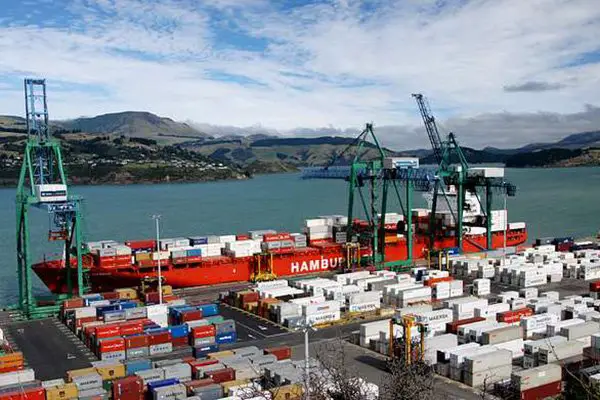
The Port of Shanghai, which is located near Shanghai, has both a deep-sea and a river port. The Shanghai International Port Group (SIPG), Shanghai’s principal port corporation, was formed after the reorganization of the Shanghai Port Authority.
Shanghai Port Container Co. and Waigaoqiao Bonded Zone Port Co. were both active in the Shanghai port.
Shanghai port surpassed Singapore’s port as the world’s busiest container port in 2010. Shanghai’s port handled 29.05 million TEU, while Singapore’s port lags behind by half a million TEU.
In 2019, Shanghai handled 43.3 million TEU. Due to its huge amounts of port trade and massive urban population, Shanghai is one of the only four-port cities in the world to be classified as a large port Megacity.
Shanghai’s port is bordered on the east by the East China Sea and on the south by Hangzhou Bay. The Yangtze River, Huangpu River (which enters the Yangtze River), and Qiantang River all meet here.
Shanghai’s port is a vital transportation center for the Yangtze River region, as well as the region’s most important gateway for international trade.
With its dense population, strong industrial foundation, and substantial agricultural sector, it serves Yangtze’s economically developed hinterland of Anhui, Jiangsu, Zhejiang, and Henan provinces.
2) Port of Singapore, Singapore
Annual container Volume in 2019: 37.2 million TEU

The Port of Singapore is the name given to the collection of facilities and terminals that handle maritime trade and Singapore’s harbors and shipping. Since 2015, it has been ranked as the world’s top maritime capital.
It transships a fifth of the world’s shipping containers, half of the world’s annual supply of crude oil, and is the world’s busiest transshipment port. It is currently the world’s second-busiest port in terms of overall shipping tonnage.
It was also the busiest port in terms of total cargo tonnage until 2005 when the Port of Shanghai surpassed it. Thousands of ships arrive in the harbor, which connects it to over 600 other ports in 123 countries across six continents.
With 1.15 billion gross tonnes (GT) handled in 2005, the port is the world’s busiest port in terms of shipping tonnage handled. With 423 million freight tonnes moved, Singapore trails Shanghai in terms of cargo tonnage.
In 2005, the port maintained its status as the world’s busiest transshipment hub, as well as the world’s largest bunkering hub, with 25 million tonnes sold in the same year.
A cruise ship terminal is also located in Singapore’s port. Princess Cruises, Royal Caribbean, Holland America Line, and others are among the cruise lines that call the port home.
When Princess deploys Sapphire Princess on three- to eleven-day roundtrip voyages to Asia, it will become the largest deployment by a luxury cruise line.
From November 2014 to February 2015, those cruises will carry around 40,000 people. While Princess reacts to a growing interest in Singapore-based cruises, stationing the ship in port will bring in $50 million in contributions.
Also read: Major ports in China
3) Port of Shenzhen, China
Annual container Volume in 2018: 27.74 million TEU
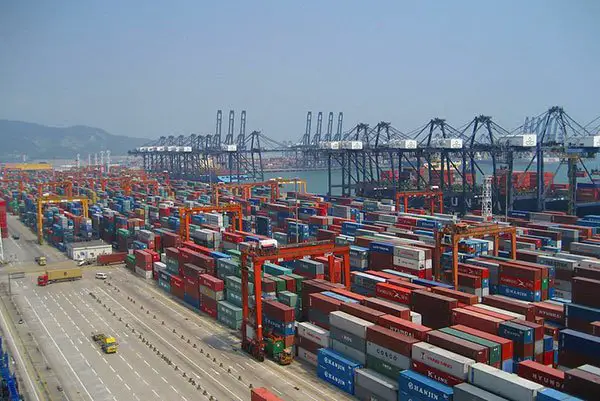
The Port of Shenzhen is the collective name for various Chinese ports located around parts of the coastline of Shenzhen, Guangdong Province, and was ranked the world’s third-largest container port in 2018 with a total throughput of 27.7 million TEUs.
These ports, when combined, create one of the world’s busiest and fastest-growing container ports. Da Chan Bay, Shekou, Chiwan, Mawan, Yantian, Dongjiaotou, Fuyong, Xiadong, Shayuchong, and Neihe are among the geographical locations served by the Shenzhen Port.
Shenzhen’s Port stretches about 260 kilometers along the city’s coastline. The New Territories and Hong Kong’s Kowloon Peninsula divide it into two areas: the eastern port and the western port.
The western port of Shenzhen is located in the Pearl River Estuary, east of Lingdingyang, and consists of a deep water harbor with safe natural shelters. Hong Kong is 37.04 kilometers to the south, and Guangzhou is 111.12 kilometers to the north.
As a result, the pearl river region, which comprises cities and counties along the river, is connected to the western port area. The western port is also connected to the On See Dun waterway, allowing trade to travel to neighboring ports.
The eastern port area is located north of Dapeng Bay, with a vast and quiet harbor that is recognized as South China’s best natural harbor.
The second-largest Chinese port is part of the 21st Century Maritime Silk Road, which runs from the Chinese coast south to the tip of India via the Suez Canal to the Mediterranean, then to the Upper Adriatic region to Trieste, Italy’s northernmost hub with rail connections to Central Europe and the North Sea.
4) Port of Ningbo-Zhoushan, China
Annual container Volume in 2018: 26.35 million TEU
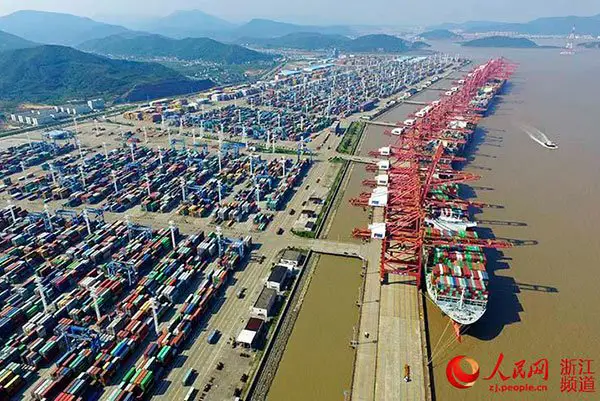
In terms of cargo tonnage, the Port of Ningbo-Zhoushan is the busiest in the world. In 2015, it carried 888.96 million tonnes of goods. The port is located in Ningbo and Zhoushan, on the East China Sea coast in Zhejiang province, on the southeast end of Hangzhou Bay, facing the Shanghai municipality.
The port is at the crossroads of the north-south inland and coastal shipping routes, with canals leading to the Yangtze River, China’s most important inland waterway, to the north.
Beilun (seaport), Zhenhai (estuary port), and the historic Ningbo harbor are among the ports that make up the port (inland river port).
The Port of Ningbo-Zhoushan handles goods, raw materials, and manufactured commodities from all over the world, including North and South America and Oceania.
It trades with more than 560 ports in more than 90 nations and regions throughout the world. It is one of a growing number of Chinese ports that handle more than 100 million tonnes of cargo every year.
Due to the large quantity of marine activity that is always in operation, the water quality within Ningbo-Zhoushan Port has deteriorated significantly over the last ten years.
Also read: Top ports in Italy
5) Port of Guangzhou, China
Annual container Volume in 2018: 21.87 million TEU
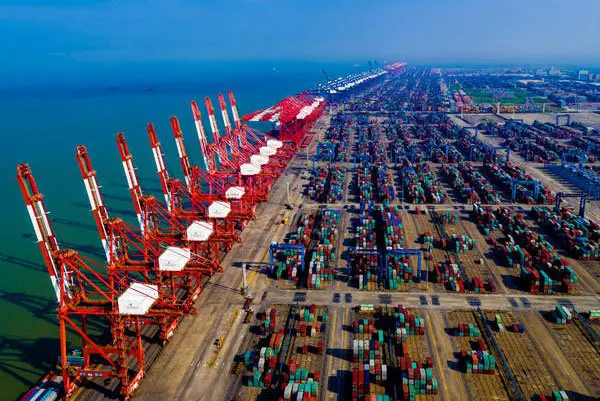
The Port of Guangzhou is the principal seaport of Guangzhou city, Guangdong province, China, and is the world’s fifth-largest container port, with 21.8 million TEUs.
Guangzhou has been an important port since the Qin Dynasty (221–206 BC); it was a significant link on the Silk Road on the Sea and one of China’s busiest ports during the Ming and Qing dynasties.
Guangzhou is located at the confluence of three major rivers: the Dongjiang, Xijiang, and Beijiang.
The Pearl River Delta Region’s principal port of emphasis, its harbor area stretches along the Pearl River coast and includes water areas in Guangzhou, Dongguan, Zhongshan, Shenzhen, and Zhuhai.
Guangzhou Port is located in South China at the convergence of three major rivers: the Dongjiang, Xijiang, and Beijiang.
The waterway, railway, expressway, and airlines all cross the three rivers here, making a vital transportation hub. It is the Pearl River Delta Region’s main focus port.
The port’s harbor region includes water areas of Guangzhou, Dongguan, Zhongshan, Shenzhen, and Zhuhai, as well as the Pearl River shore.
The port serves as a gateway for maritime activities for other harbor areas such as Nansha Harbor Area, Xinsha Harbor Area, Huangpu Harbor Area, and Inner Harbor Area, and Nansha Harbor Area in Hong Kong, as it is located beyond the entrance of the Pearl River opening.
6) Port of Busan, South Korea
Annual container Volume in 2018: 21.66 million TEU
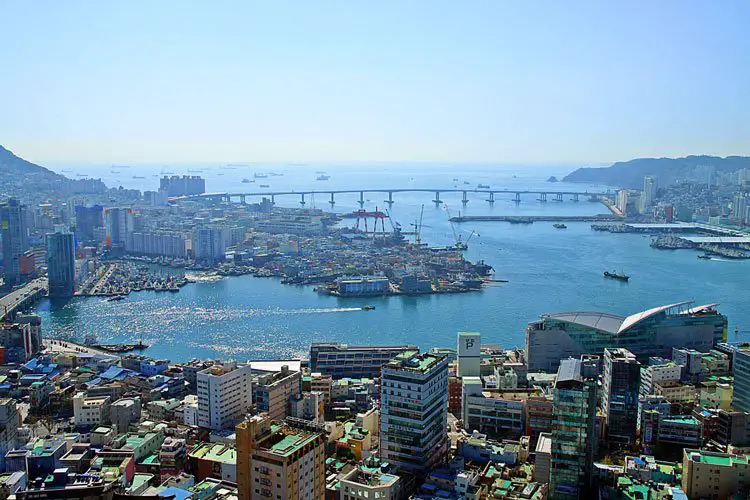
The Port of Busan is located in South Korea near the mouth of the Naktong River. It is the world’s fifth-busiest container port and North-East Asia’s largest transshipment port.
According to the American Association of Port Authorities, the port was the tenth busiest in terms of overall tonnage and the sixth busiest in terms of 20-foot TEUs of containerized goods in 2007.
The Port of Busan was the only city not taken by North Korea during the Korean War, aside from Jeju City (1950-1953).
After the Korean War ended, the Port of Busan became a self-governing city. Shipbuilding, vehicles, steel, electronics, chemicals, ceramics, and paper are among the city’s principal industries.
The Busan Port Authority (BPA), which was founded in January 2004, develops, manages, and operates the port of Busan. The BPA has set a goal of transforming Busan’s port into a world-class port.
Also read: Major ports in Spain
7) Port of Hong Kong, Hong Kong
Annual container Volume in 2018: 19.60 million TEU
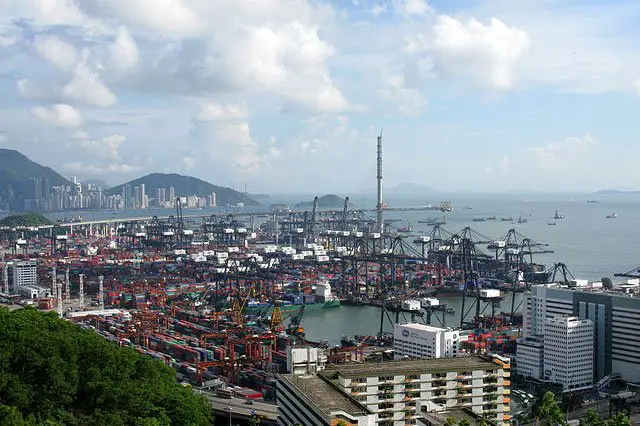
The Kowloon Peninsula, off the coast of the South China Sea, is home to Hong Kong’s port. In the Southeast and East Asian regions, it is an important hub. The port operates 400 container liners every week to over 500 destinations throughout the world.
The port is managed by the Hong Kong Special Administrative Region’s government’s marine department. The Hong Kong Port Development Council is in charge of port planning and development.
In the Kwai Chung area, Stonecutters Island, and Tsing Yi, the Hong Kong Port contains nine container ports.
The river trade terminal at Tsuen Mun handles container consolidation, breakbulk, and bulk cargo operations. The loading and unloading of cargoes take place in the harbor’s mid-stream regions.
Dry docks, anchorages, slipways, and repair and maintenance facilities for all sorts of vessels are available at the port.
Tsing Yi Island’s west coast is home to three floating dry docks. Smaller shipyards near the harbor perform repairs and manufacture specialized craft for export markets, such as patrol vessels and pleasure cruises.
8) Port of Qingdao, China
Annual container Volume in 2018: 18.26 million TEU
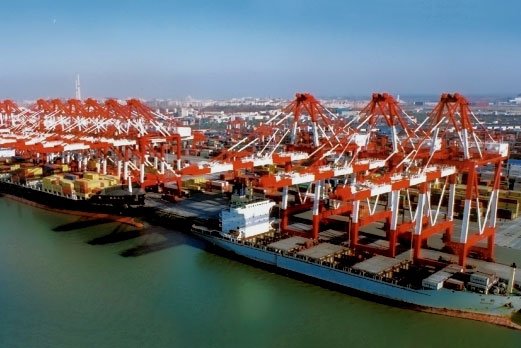
The Port of Qingdao is located on the Yellow Sea near Qingdao, Shandong Province, China, and is one of the world’s ten busiest ports. Dagang port area, Qianwan port area, Guangdong oil port area (for oil tankers), and Dongjiakou port area are the four sectors that make up Qingdao port, which is located 40 kilometers south of Qingdao city.
The Port of Qingdao also has a huge iron ore facility in addition to the Qingdao Qianwan Container Terminal and the Qingdao Cosport International Container Terminal.
The Port of Qingdao is a seaport located near Qingdao, Shandong Province, People’s Republic of China, on the Yellow Sea. It is one of the world’s top 10 busiest ports (7th in 2019 considering total cargo volume).
Dagang port area, Qianwan port area, Huangdong oil port area (for oil tankers), and Dongjiakou port area (about 40 kilometers south of Qingdao city) are the four areas of Qingdao port (commonly referred to as port due to their size).
Qingdao features a significant iron ore terminal in addition to the Qingdao Qianwan Container Terminal and the Qingdao Cosport International Container Terminal, both of which are located in distinct localities.
Also read: Major ports in India
9) Port of Tianjin, China
Annual container Volume in 2018: 16 million TEU
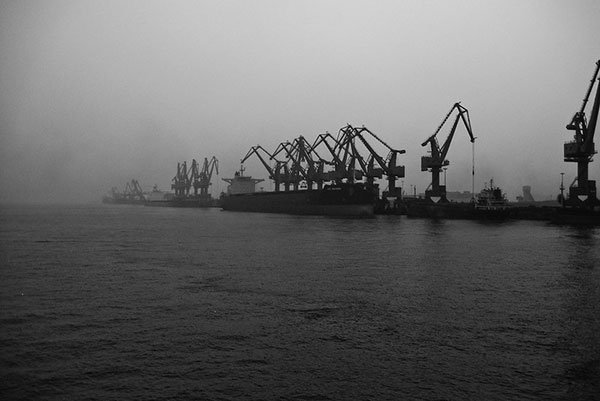
The Port of Tianjin is one of North China’s principal logistics and shipping hubs. It is the largest port in Northern China and the main marine entrance to Beijing. It is situated on the western bank of the Bohai Bay, on the Haihe River’s estuary, 170 kilometers southeast of Beijing and 60 kilometers east of Tianjin.
It was the ninth-biggest container port in the world in 2018, and the largest man-made port in mainland China and one of the world’s largest.
The port’s overall container traffic in 2019 was 15.97 million TEUs, up 6.2 percent from the previous year.
The port traded with more than 600 ports in more than 180 nations and territories in 2019. Over 115 regular container lines, including all of the world’s top 20 liners, served it.
Mudflats, salt marshes (and salterns), and coastal shallows dominated the Tianjin municipality’s coastline territory prior to development.
This littoral zone is broad and gently sloping: At a slope of 0.71–1.28 percent, the 0 m isobath (intertidal flats) extends 3–8 km from the coast, the 5 m isobath extends 14–18 km from shore, and the 10 m isobath reaches 22–36 km from shore.
Because of these characteristics, deepwater transportation necessitates substantial dredging, making land reclamation a cost-effective building choice. Tianjin Port is mostly man-made as a result of dredging and reclamation.
10) Port of Jebel Ali, UAE
Annual container Volume in 2018: 14.95 million TEU
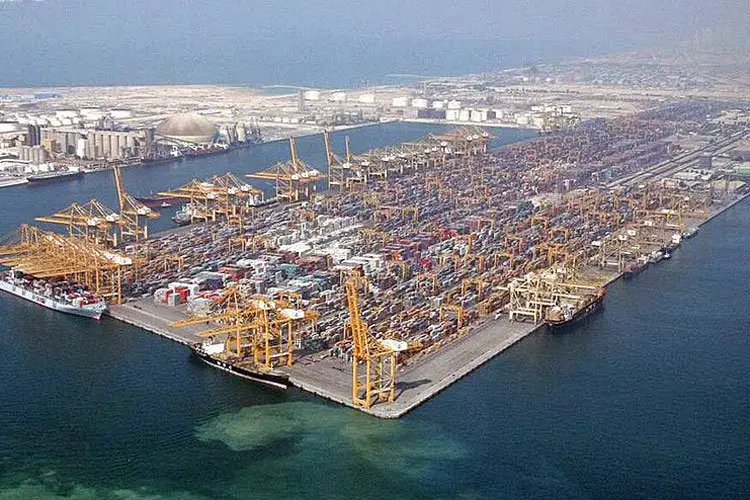
The Gulf, Indian Subcontinent, and African markets are all served through the Jebel Ali Port. The nature of the cargo imported and exported reflects the diversity of the region and the markets supplied by Jebel Ali Port.
The port’s high level of specialization in the storage and handling of all types of cargo at its facilities strengthens it. Bulk, breakbulk, and RoRo are examples of these.
The General Cargo Terminal at Jebel Ali has a total storage area of about 1.4 million square meters, with 27 berths and a quayside depth of 15 meters, allowing very big and unique cargo ships to dock.
Outside of the United States, the port at Jebel Ali has become the most utilized by US Navy ships. A Nimitz-class aircraft carrier and several ships from the accompanying battle group can be housed pierside due to the depth of the harbor and the extent of the port facilities. Semi-permanent shore-leave facilities have been developed adjacent to the carrier berth due to the frequency of these port visits.
Also read: Top ports in UAE

